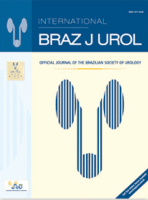
International Braz J Urol
Scope & Guideline
Your Gateway to Cutting-Edge Urological Research
Introduction
Aims and Scopes
- Robotic Surgery and Minimally Invasive Techniques:
The journal focuses extensively on robotic-assisted surgeries, including advancements in techniques, outcomes, and comparisons with traditional surgical methods. This reflects a growing trend towards minimally invasive approaches in urological procedures. - Clinical Research and Meta-Analyses:
IBJU publishes systematic reviews and meta-analyses that synthesize existing research, providing valuable insights into clinical practices, treatment efficacies, and patient safety across various urological conditions. - Infertility and Male Reproductive Health:
The journal emphasizes research on male infertility, exploring various treatment modalities, including surgical interventions and pharmacological therapies, addressing significant public health concerns. - Innovations in Diagnostic Techniques:
IBJU highlights novel diagnostic tools and imaging techniques, such as MRI and PET scans, to enhance the accuracy of urological diagnoses, underscoring the importance of early detection and treatment. - Pediatric Urology:
The journal includes research dedicated to pediatric urology, addressing unique challenges and treatment strategies for urological conditions in children. - Urological Oncology:
A significant focus is placed on the management and treatment outcomes of urological cancers, particularly prostate, bladder, and renal cancers, reflecting the journal's commitment to improving oncological care. - Patient-Centered Approaches and Quality of Life:
Research on the psychosocial aspects of urological diseases, including quality of life assessments and patient-reported outcomes, is integral to the journal's mission, emphasizing holistic care in urology.
Trending and Emerging
- Telesurgery and Remote Assistance:
Recent publications have increasingly focused on telesurgery and remote assistance technologies, highlighting their potential to improve surgical training and patient outcomes, particularly in rural and underserved areas. - Artificial Intelligence and Machine Learning in Urology:
There is a burgeoning interest in the application of artificial intelligence and machine learning techniques for diagnostics, treatment planning, and predictive modeling in urology, showcasing the integration of technology into clinical practice. - Patient-Centered Care and Shared Decision-Making:
Emerging research emphasizes the importance of patient-centered approaches and shared decision-making processes, reflecting a shift towards more inclusive and personalized care in urological practice. - Innovative Approaches to Male Infertility:
Research on innovative treatments and diagnostic methods for male infertility is gaining traction, addressing a critical area of public health and patient concern. - Focus on Quality of Life in Urological Patients:
There is an increasing trend towards assessing quality of life and patient-reported outcomes in urological research, indicating a broader understanding of patient needs beyond clinical metrics. - Integration of Telemedicine in Urological Practice:
The rise of telemedicine as a viable option for patient consultations and follow-ups has been a significant focus, particularly in the context of the COVID-19 pandemic, which has accelerated its adoption.
Declining or Waning
- Traditional Open Surgical Techniques:
There has been a noticeable decrease in research focused on traditional open surgical methods, as robotic-assisted and minimally invasive techniques gain preference among practitioners and researchers. - Basic Urological Procedures:
Studies focusing on basic urological procedures, such as simple cystectomies or standard urethral surgeries, are less frequently published, likely due to the rise of more complex and innovative surgical interventions. - Non-robotic Assisted Nephrectomy Techniques:
Research on non-robotic nephrectomy approaches has diminished, as the emphasis shifts towards robotic-assisted techniques that offer improved outcomes and reduced recovery times. - Pharmacological Treatments for Non-specific Symptoms:
There is a decline in studies addressing pharmacological treatments for non-specific urological symptoms, as focus shifts towards more targeted therapies and interventions. - Conventional Imaging Techniques:
Research centered on conventional imaging methods, such as X-rays and basic ultrasounds, appears to be waning, with a pivot towards advanced imaging modalities that provide better diagnostic capabilities.
Similar Journals
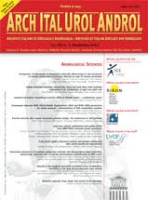
Archivio Italiano di Urologia e Andrologia
Bridging research and clinical excellence in urology.Archivio Italiano di Urologia e Andrologia is a reputable peer-reviewed journal dedicated to advancing the field of urology and andrology, published by PAGEPRESS PUBL. Since its inception in 1993, the journal has been at the forefront of disseminating high-quality research, making a significant impact with its current ranking in the third quartile (Q3) in the Urology category as of 2023. With an emphasis on open access since 2013, Archivio Italiano di Urologia e Andrologia ensures that research findings are readily available to healthcare professionals, researchers, and students globally. This is particularly important in an era of increasing digital engagement in medical research. With its ISSN 1124-3562 and E-ISSN 2282-4197, the journal is committed to promoting innovative research and clinical practices that contribute to the understanding and treatment of urological conditions. By fostering collaboration and sharing the latest findings, the journal aims to bridge the gap between research and clinical practice, enhancing the quality of care provided to patients.

Journal of Urological Surgery
Shaping the Future of Urology with Pioneering InsightsJournal of Urological Surgery, published by GALENOS PUBL HOUSE, is a premier open access journal dedicated to the evolving field of urology. With its commitment to accessible knowledge since 2014, the journal aims to disseminate cutting-edge research, case studies, and innovative practices related to urological surgery, making it a vital resource for researchers, clinicians, and students alike. While it is currently indexed in key databases, the journal also seeks to strengthen its impact factor, reflecting its growing significance in the medical community. Based in Istanbul, Turkey, the Journal of Urological Surgery not only addresses critical advancements in surgical techniques and patient care but also encourages collaborative discussions within the field, making it an essential platform for those looking to stay at the forefront of urological innovations.

American Journal of Clinical and Experimental Urology
Transforming research into practice for better urological health.American Journal of Clinical and Experimental Urology is a pivotal platform for the dissemination of cutting-edge research in the field of urology. Published by E-CENTURY PUBLISHING CORP, this peer-reviewed journal aims to enhance the understanding and application of clinical and experimental practices in urological science. The journal prioritizes high-quality, original research articles, reviews, and case studies that provide valuable insights for urologists, researchers, and healthcare professionals alike. With an increasing focus on evidence-based approaches to urological health, AJCEU serves as an essential resource for those who strive to advance diagnostic and therapeutic methodologies. Though currently not indexed in major databases, the journal is committed to expanding its reach within the academic community, thus fostering collaboration and innovation in urology. The open access model allows for broader distribution and engagement with the latest findings in the field, making it an indispensable tool for scholars and practitioners dedicated to advancing urological care and research.
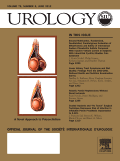
UROLOGY
Advancing Urological Knowledge for Tomorrow's CareUROLOGY is a prestigious journal published by Elsevier Science Inc, renowned for disseminating high-quality research and reviews in the field of urology. With an ISSN of 0090-4295 and E-ISSN 1527-9995, this journal has been a trusted resource since its inception in 1973 and continues to provide insights into the latest advancements and clinical practices in urology, maintaining a category quartile of Q2 as of 2023. The journal ranks 50th out of 120 in the Scopus metrics for Medicine - Urology, placing it in the 58th percentile, which underscores its influence and relevance in the academic community. Although it is not structured as an open access journal, it offers a wealth of knowledge vital for researchers, healthcare professionals, and students alike, enabling them to stay abreast of evolving treatments and innovations in the field. As we move towards 2024, UROLOGY remains committed to advancing research and enhancing practices in urological care, fostering a collaborative environment among its readership.

Central European Journal of Urology
Fostering Collaboration in Urological ExcellenceThe Central European Journal of Urology, published by the Polish Urological Association, serves as a vital platform for the dissemination of cutting-edge research in the field of urology. Established in 2009 and continuing through 2024, this journal aims to foster innovation and collaboration among researchers, clinicians, and students by offering a forum for high-quality, peer-reviewed articles that highlight advancements in urological science and practice. Currently holding a Scopus rank of #68 out of 120 in the Medicine_Urology category, and a 2023 quartile ranking of Q3, it is positioned to provide valuable insights into emerging trends and techniques. Although being a subscription-based journal, it remains crucial for professionals seeking to stay updated on the latest developments in urology, contributing significantly to the global conversation in this specialty. With its strong ties to the academic community and dedication to excellence, the Central European Journal of Urology continues to be an indispensable resource for those advancing knowledge and practice in urology.

African Journal of Urology
Unveiling Insights, Bridging Gaps in UrologyAfrican Journal of Urology (ISSN: 1110-5704, E-ISSN: 1961-9987) is a leading scholarly publication in the field of urology, published by SPRINGER from the United Kingdom. Since adopting an open access model in 2012, this journal has aimed to increase the visibility and dissemination of vital research findings across the African continent and beyond. With a current impact factor and significant standing, as denoted by its Q3 ranking in Urology for 2023, it serves as an essential platform for clinicians, researchers, and students alike. The journal's scope encapsulates all aspects of urology, fostering advancements in both clinical practices and innovative research while specifically addressing healthcare challenges relevant to African populations. As part of its commitment to accessibility and academic excellence, the journal offers full open access to its content, allowing for a broad readership and engagement with cutting-edge studies. Engage with the African Journal of Urology to contribute to and stay informed about vital developments in urological science.
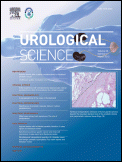
Urological Science
Innovating Urology: Where Science Meets PracticeUrological Science, published by Lippincott Williams & Wilkins, is a prominent open-access journal that has been a vital resource for the Urology field since its establishment in 2010. With a focus on innovative research and advancements in urological science, the journal aims to disseminate significant findings and encourage dialogue among physicians, researchers, and healthcare professionals worldwide. The journal has achieved a commendable Q3 rank within its category according to the latest quartiles released in 2023 and holds a Scopus rank of #80 out of 120 in the Medicine Urology field, placing it in the 33rd percentile. By providing an open-access platform, Urological Science ensures that vital research is easily accessible to a global audience, supporting the ongoing advancements in urological healthcare and education. As the landscape of urology evolves, this journal remains an essential vehicle for sharing knowledge and improving patient outcomes, making it an invaluable resource for anyone invested in the future of urological science.

WORLD JOURNAL OF UROLOGY
Unveiling Innovations in Urology ResearchWORLD JOURNAL OF UROLOGY, published by Springer, stands as a premier journal in the field of urology, holding a commendable Q1 ranking in the 2023 category quartiles. With an ISSN of 0724-4983 and an E-ISSN of 1433-8726, this journal has been a vital resource since its inception in 1983, and continues to influence research up to 2024. Its ranking of 13th out of 120 in the Scopus Medicine Urology category, placing it in the 89th percentile, reflects its significant impact within the academic community. The journal aims to publish cutting-edge research, reviews, and clinical studies that advance knowledge in urological science and practice. Although it features no open access options, its rigorous peer-review process ensures that only the highest quality studies are disseminated, catering to a wide audience of researchers, medical professionals, and students eager to stay at the forefront of urological advancements.
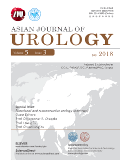
Asian Journal of Urology
Connecting urologists with groundbreaking discoveries.Asian Journal of Urology is a premier open-access scholarly journal dedicated to advancing the field of urology. Published by Elsevier Singapore Pte Ltd, this journal provides a platform for researchers, clinicians, and students to share impactful findings and innovative practices within urological sciences. Since its inception in 2014, it has established itself as a significant contributor to the discourse in urology, achieving a commendable Q2 ranking in the category of Urology for 2023 and securing the 41st position out of 120 in Scopus rankings, placing it in the 66th percentile amongst its peers. With a commitment to ensuring broad accessibility, all articles are freely available online, promoting widespread dissemination of knowledge. The journal aims to publish high-quality research that informs clinical practices and contributes to the development of urological sciences, making it an essential resource for professionals and scholars in the field.

Urology Case Reports
Transforming urology through the lens of real-world cases.Urology Case Reports is a premier open access journal dedicated to the rapid dissemination of clinical case studies in the field of urology. Published by Elsevier Science Inc, this journal has been providing valuable insights and advancements in urological science since its inception in 2013. With a focus on unique and impactful case reports, it serves as an essential resource for researchers, healthcare professionals, and students seeking to stay at the forefront of urological medicine. Operating from its headquarters in New York, NY, the journal has established itself within the medical community, currently holding a Category Quartile ranking of Q3 in Urology as per the 2023 metrics, and is positioned at the 29th percentile within its Scopus rank for the Medicine - Urology category. The open access model promotes broad accessibility, allowing for a global exchange of knowledge, which is critical for advancing clinical practices. By bridging clinical findings and practical applications, Urology Case Reports plays a pivotal role in enhancing urological care and education.